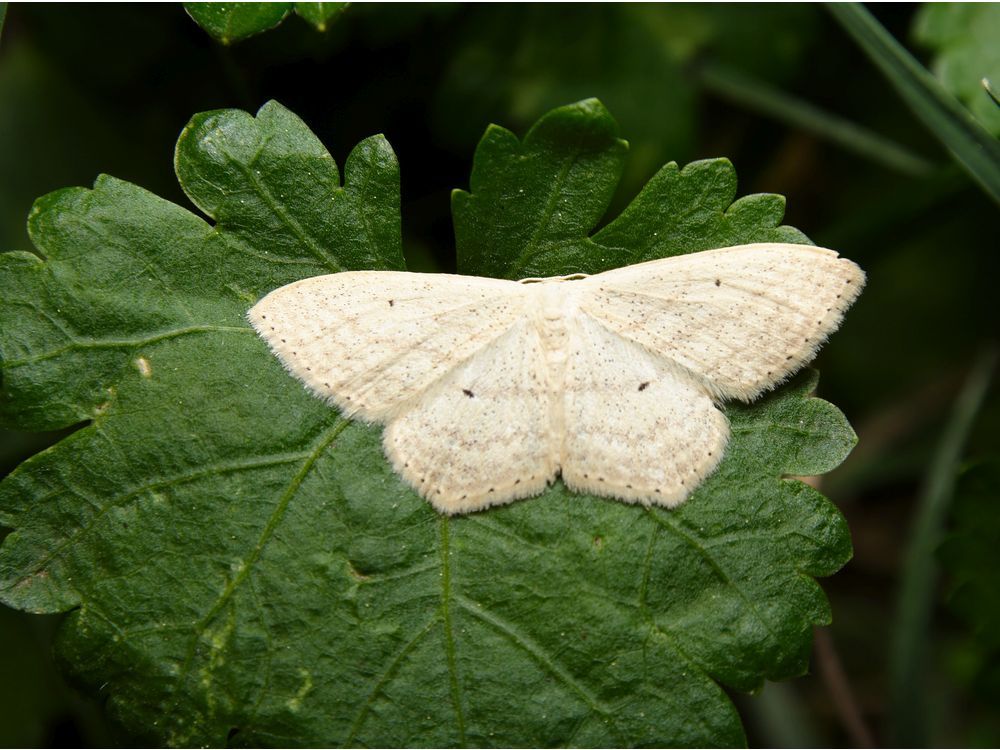Outbreak of hemlock looper moth hits North Shore, Metro watersheds

Credit to Author: Tiffany Crawford| Date: Wed, 11 Sep 2019 21:51:56 +0000
The North Shore has been hit with an outbreak of western hemlock looper moths, a species known to decimate trees.
While there is no health risk to humans, swarms have been gathering around lights at night, and outbreak levels have been detected at Metro Vancouver’s three watersheds — Capilano, Seymour and Coquitlam.
“In places where there are those big lights at night, it looks like snow — and they are all hemlock looper moths,” said Judith Wheeler, a spokeswoman for Watershed and Environment Management Water Services at Metro Vancouver, which is monitoring the swarms at the watersheds.
“The outbreak, anecdotally, has been noted on the North Shore. We are seeing an uptick in the numbers, both in our parks and watershed areas.”
Hemlock looper moth.
Wheeler said the reason for the outbreak is likely that there have been a few hotter than normal summers in a row, along with drought conditions, which stresses trees.
“Stressed out trees are more susceptible to predators,” she said.
Climate change will cause increased temperatures and more frequent drought, which could result in increased severity of looper moth outbreaks, but it’s still not known for sure, said Allan Carroll, a professor of insect ecology and director of the Forest Sciences Program at University of B.C.
“Looper peaks to an outbreak and then collapse afterwards. So there could be a situation where a warming environment makes that worse but it’s really hard to know if and when that is happening,” he said.
There are many other species which can be linked to a warming environment and the impacts they cause is much clearer, he said, for example the mountain pine beetle.
Also, trees may be dying because of the dry conditions, which makes them more susceptible to all kinds of insects, he said.
“So we have situations where there are clear links between warming and insect impacts but whether that is the case with the current outbreak of hemlock looper is difficult to say.”
The looper larvae chews on the needles of the trees and when populations are huge can strip the entire tree, causing the tree to die.
Carroll said when insect populations get big enough to start killing trees it can be a big problem for the forestry industry as well as the watershed.
“Dead trees don’t help watersheds produce clean, consistent amounts of drinking water because trees will intercept the rain and filter the pollutants and particles from that water and let it go out to the streams. So when trees die, they are not able to do that,” he said.
He agreed with Wheeler that Metro Vancouver should not spray the moth because of the proximity to the region’s drinking supply.
At this time, Metro Vancouver has no plans to spray the moth, said Wheeler.
She said the swarms are a natural phenomenon, adding that the water quality is always being monitored.
The hemlock looper is one of the most destructive defoliators in the province and prefers to feed on mature hemlocks, but it will also attack cedar and fir trees.
Wheeler said Metro staff plan to to let nature take its course when it comes to forest management in the watershed.
“If we don’t think it is going to impact water quality, we just monitor and observe,” she said.
Wheeler said she first noticed an increase in numbers last fall and there are more moths this year, but staff will know more when they collect traps.
Staff will also fly over the area to assess how much damage has been done to the trees, which turn red after a looper moth infestation.
“It’s kind of like somebody coming over to your house and you have a dozen doughnuts and they take a bite out of each doughnut. They are really messy feeders and go from needle to needle and take bites out of each one,” she said.
Hemlock looper outbreaks develop and subside very suddenly, which is a good reason not to spray, said Carroll.
“Usually they collapse before they cause extensive mortality. They are short-lived and so not spraying is a wise move because the problem will go away,” he said.
Native to North America, the hemlock looper has destroyed several million hectares of conifer forests in Eastern Canada over the years, according to Natural Resources Canada.
CLICK HERE to report a typo.
Is there more to this story? We’d like to hear from you about this or any other stories you think we should know about. Email vantips@postmedia.com